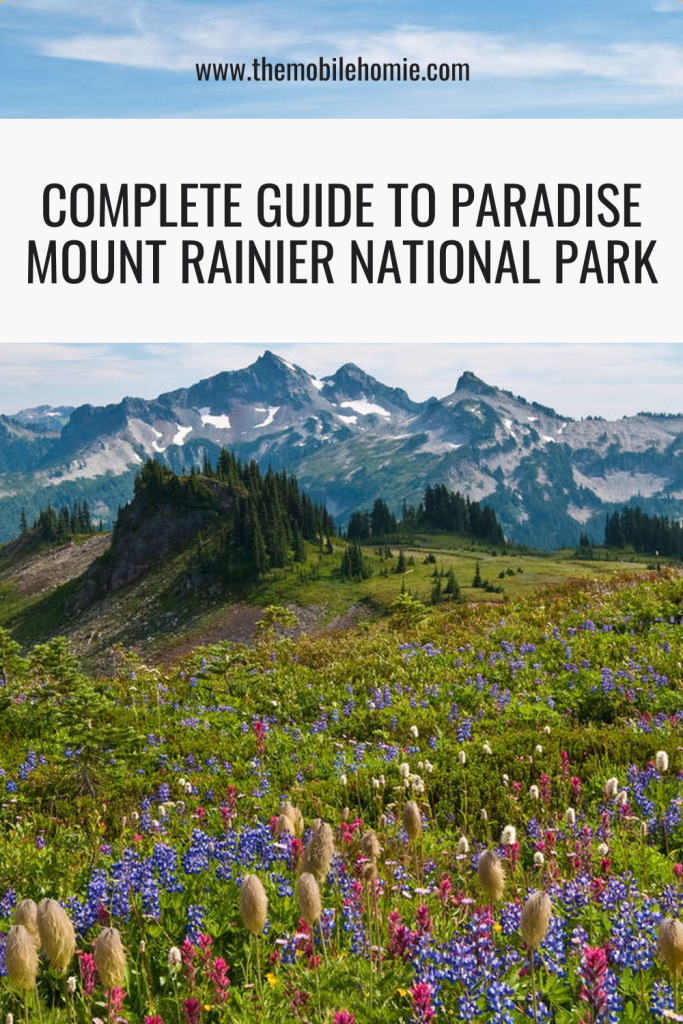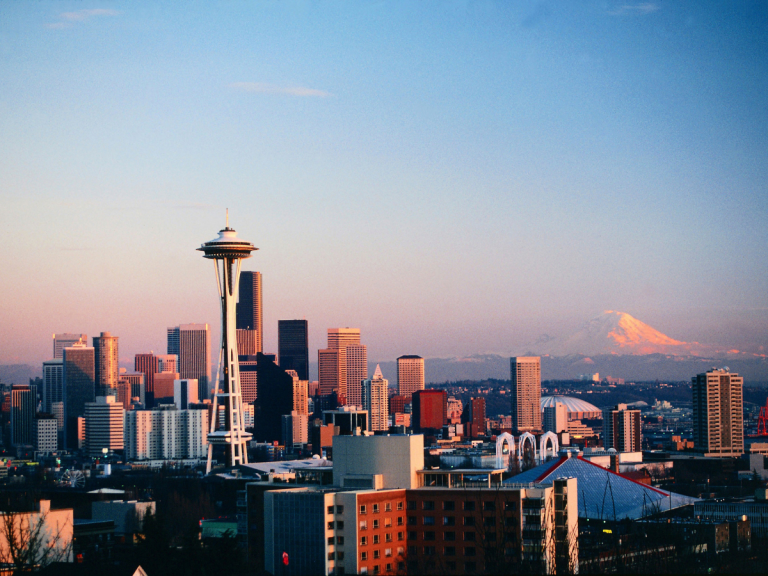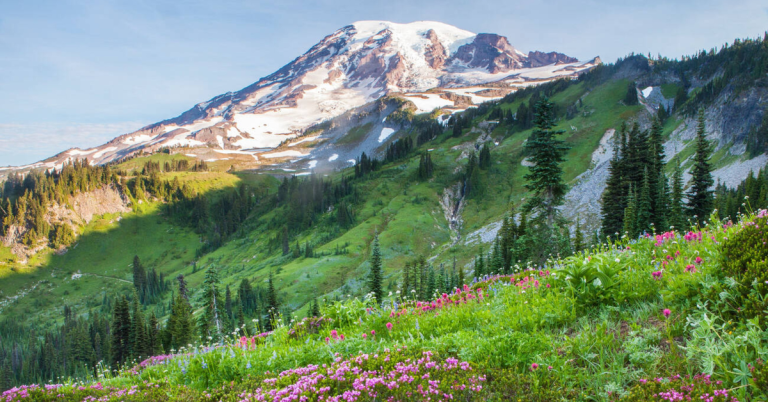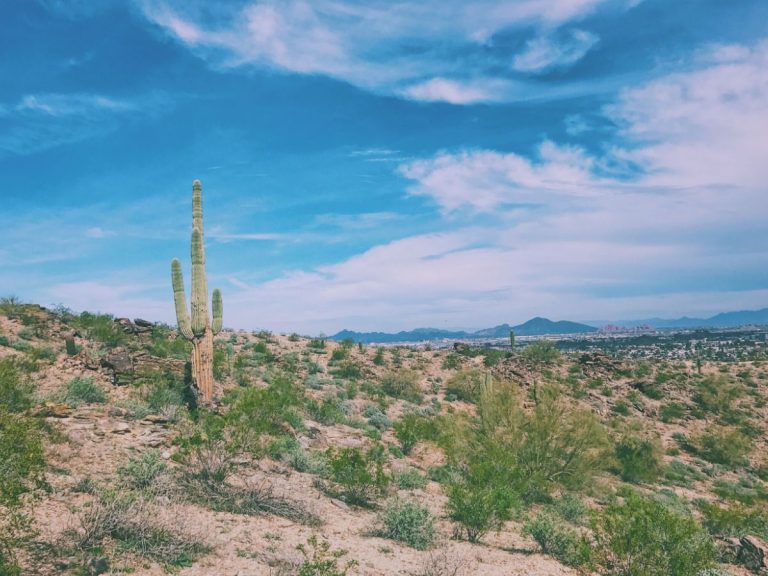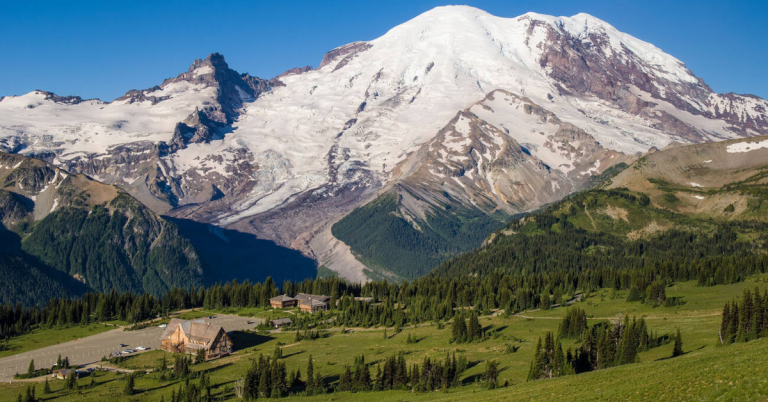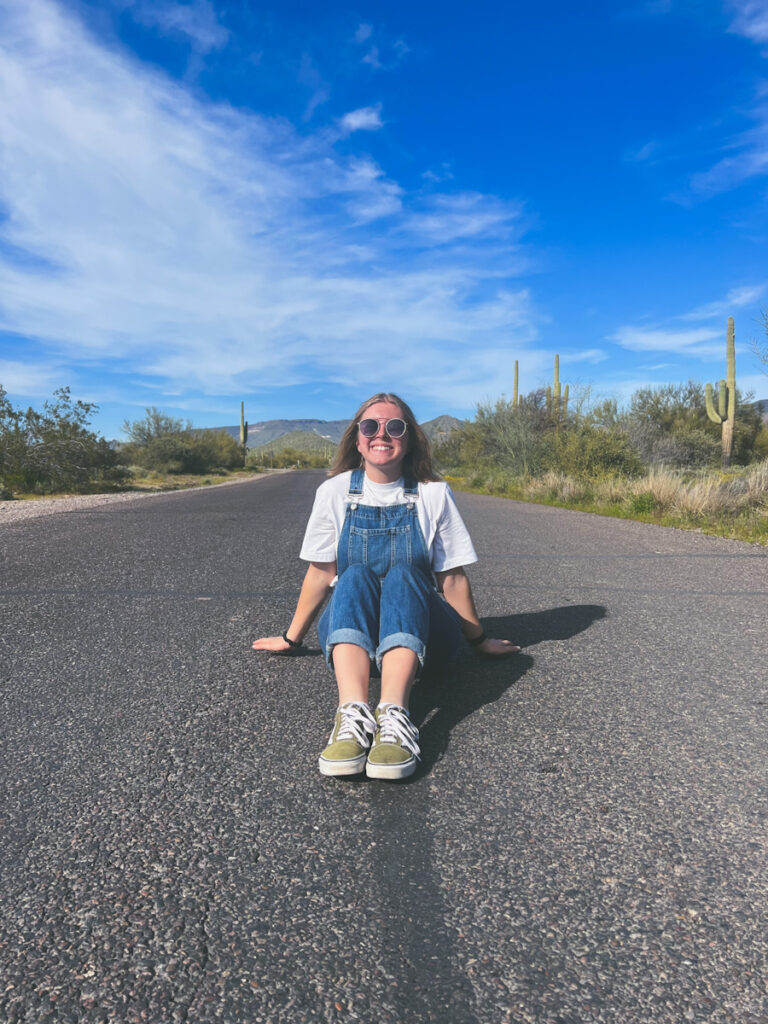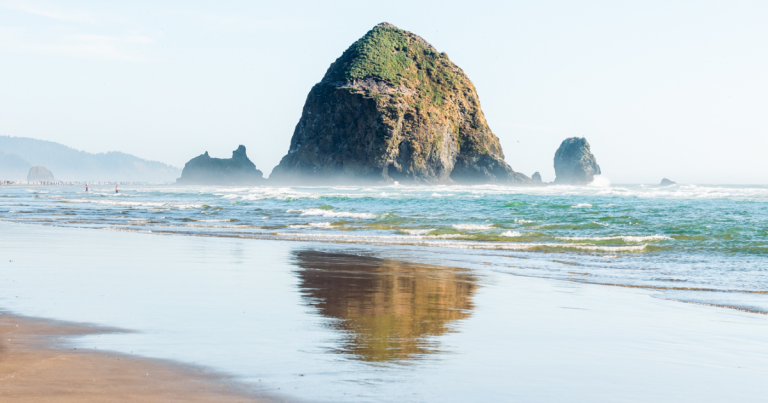Ultimate Guide to Mount Rainier National Park Paradise
The Mobile Homie contains affiliate links and is a participant in the Amazon Services LLC Associates Program, as well as other affiliate programs. If you click on a link or make a purchase through one of these links, we may earn a small commission at no extra cost to you. For more details, see our Privacy Policy.
Mount Rainier National Park Paradise is absolutely incredible! I’m not even exaggerating when I say it’s one of the most beautiful places we’ve ever been to. The name says it all — this place is literally paradise on earth! It’s the kind of place that makes your jaw drop and has you taking a million photos (trust me, I know from experience)!
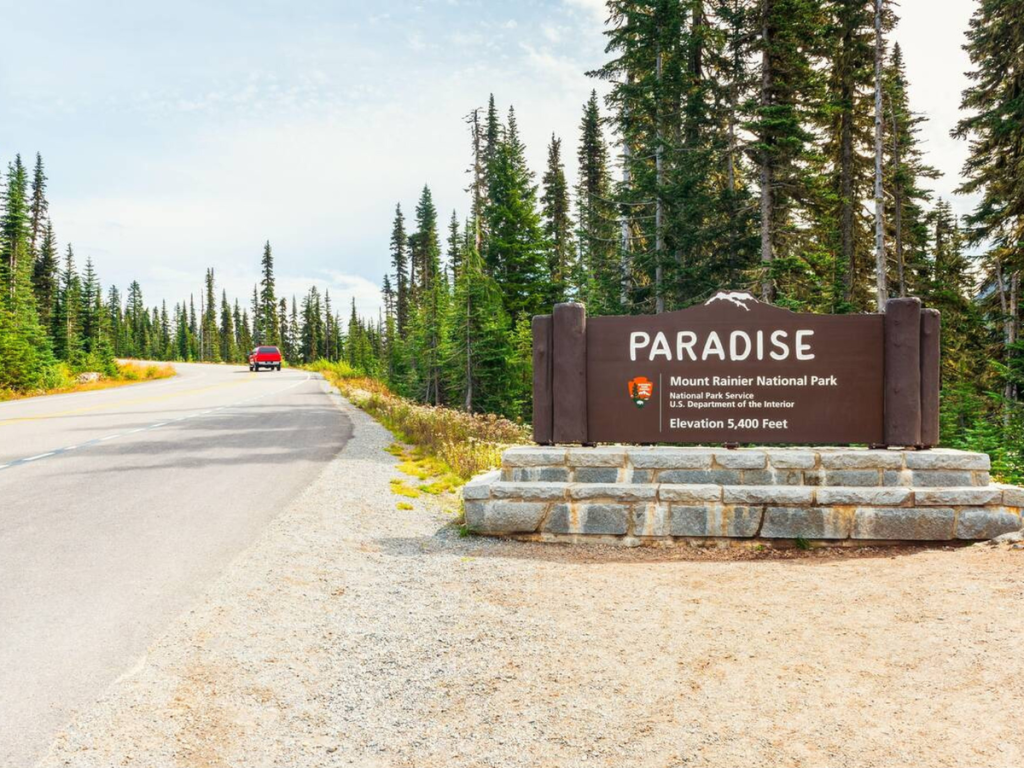
Every single person I’ve talked to who has visited Mount Rainier National Park Paradise has fallen head over heels for it, and honestly, how can you not? JT and I have been to Mount Rainier multiple times now, experiencing both Paradise and Sunrise during our epic 2024 road trip to all 50 states.
We actually discovered Paradise first, then fell in love with Sunrise on our second visit, but Mount Rainier National Park Paradise still holds a special place in our hearts! The hiking trails are amazing, the wildflowers are out of this world, and the views… don’t even get me started on the views!
Whether you’re visiting with your family, looking for budget-friendly adventures, or just want to experience some of Washington’s most incredible scenery, Paradise in Mount Rainier National Park delivers in every single way.
With so many incredible things to see and do at Paradise, planning your trip can feel a bit overwhelming.
When should you visit for the best wildflowers? Do you need reservations? Which hiking trails should you prioritize? Where on earth are you going to park during peak season? And if you’re planning a longer Pacific Northwest adventure, how does Paradise fit into a bigger itinerary?
Don’t worry! I’m going to walk you through everything you need to know to have the most amazing Paradise experience. During our 2024 road trip through all the lower 48 states, JT and I spent countless hours researching Mount Rainier, and let me tell you — even with all that preparation, both Paradise and Sunrise completely blew us away! We’ve now visited Mount Rainier multiple times and experienced both major areas of the park. I’m excited to share all my insider tips and real experiences with you!
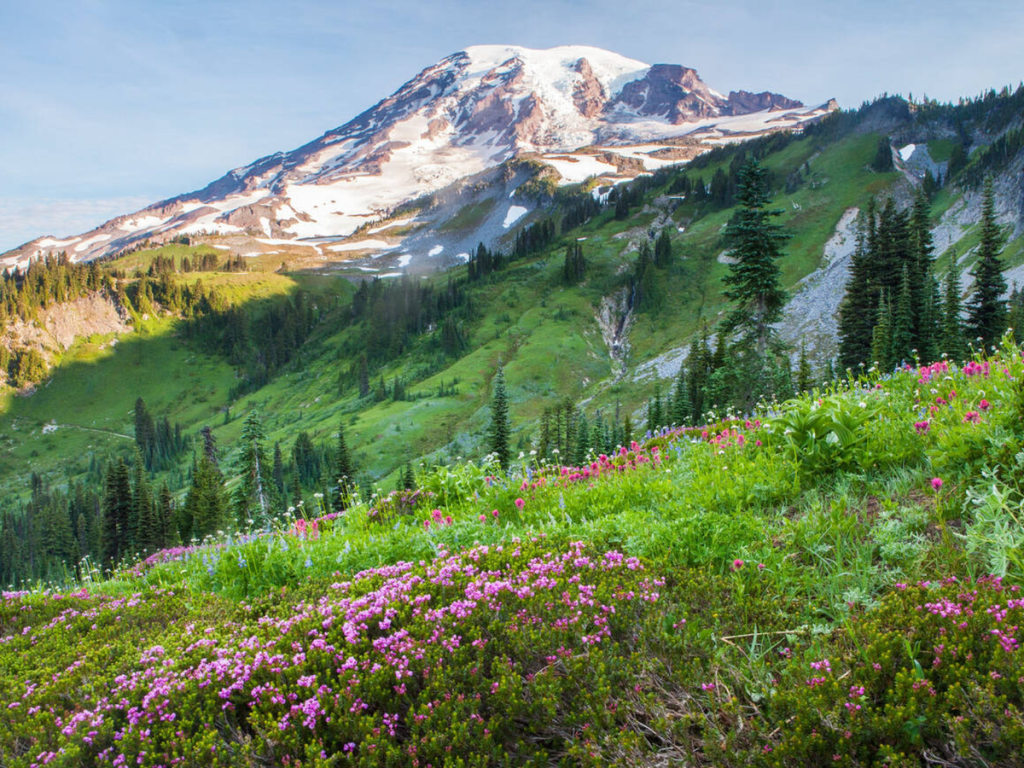
Why Mount Rainier National Park Paradise Should Be on Your Bucket List
Located on the south side of Mount Rainier at about 5,400 feet elevation, this subalpine wonderland offers something magical year-round.
During summer, Mount Rainier National Park Paradise transforms into a photographer’s dream with endless wildflower meadows. Come winter, it becomes a snowy playground perfect for families wanting to experience the mountains without the extreme backcountry commitment.
The area got its heavenly name back in the 1880s when early visitors were completely blown away by its beauty. And let me tell you, after visiting all 50 states in the US and seeing some pretty incredible places, Mount Rainier National Park Paradise still has that same jaw-dropping effect!
JT and I literally stood there with our mouths open during our first Mount Rainier visit when we saw those wildflower meadows stretching endlessly with Mount Rainier towering above. It’s one of those places where even the most seasoned travelers stop dead in their tracks and just stare.
Paradise vs. Sunrise: Which to Choose
This is probably the most common question we get from first-time Mount Rainier visitors. Both areas are incredible, but they offer completely different experiences.
Paradise offers easier access, more facilities, and year-round accessibility. Sunrise provides wilder, more remote experiences with different perspectives of Mount Rainier, but it’s only open seasonally (typically July-September). After experiencing both areas multiple times, JT and I can tell you they each offer something completely unique!
For a detailed comparison and everything you need to know about the other side of the mountain, check out our complete Sunrise Mount Rainier guide.
Mount Rainier National Park Paradise is all about alpine meadows and mountain views, while other areas like Grove of the Patriarchs offer old-growth forest experiences. For first-time visitors and families, Paradise remains the top choice for really good reason! If you’re planning to explore multiple areas of the park, our Mount Rainier 2-day itinerary covers both Paradise and other must-see spots in detail.
When to Visit Mount Rainier National Park Paradise
Here’s where things get interesting. Mount Rainier National Park Paradise operates on nature’s schedule, not ours, which means timing can make or break your experience.
Summer Season (July-September)
Summer is when Mount Rainier National Park Paradise truly lives up to its name. The wildflower season typically runs from mid-July through early August, transforming the meadows into a living watercolor painting. We’re talking about lupines, Indian paintbrush, beargrass, and dozens of other species creating a kaleidoscope of colors that’ll make your phone’s camera work overtime.
This is also when all the hiking trails are accessible, parking is most challenging, and the weather is most predictable. Temperatures hover between 60-75°F during the day, though it can drop into the 40s at night – so pack layers.
Fall Season (September-October)
September might just be my absolute favorite time to visit Mount Rainier National Park Paradise! The summer crowds start to thin out, but the weather often stays absolutely gorgeous. You’ll catch the tail end of wildflower season, and the changing leaves add this whole different kind of beauty to your photos. Plus, parking becomes SO much easier — it’s like visiting a completely different place compared to peak summer!
Winter & Spring Seasons
Winter (November-May): A Snowy Wonderland
Don’t write off Mount Rainier National Park Paradise during winter months. While many trails become inaccessible, the area transforms into a winter sports paradise. Snowshoeing and cross-country skiing are incredibly popular, and the snow-covered landscapes create an entirely different but equally stunning experience.
The Paradise area typically receives 50+ feet of snow annually, creating a winter wonderland that lasts from December through April.
Spring (May-June): The Awakening
Spring at Mount Rainier National Park Paradise is like watching nature wake up from a long nap. Snow melts reveal the first green shoots, and you can literally watch the landscape transform week by week. It’s unpredictable but incredibly rewarding for those willing to roll with changing conditions.
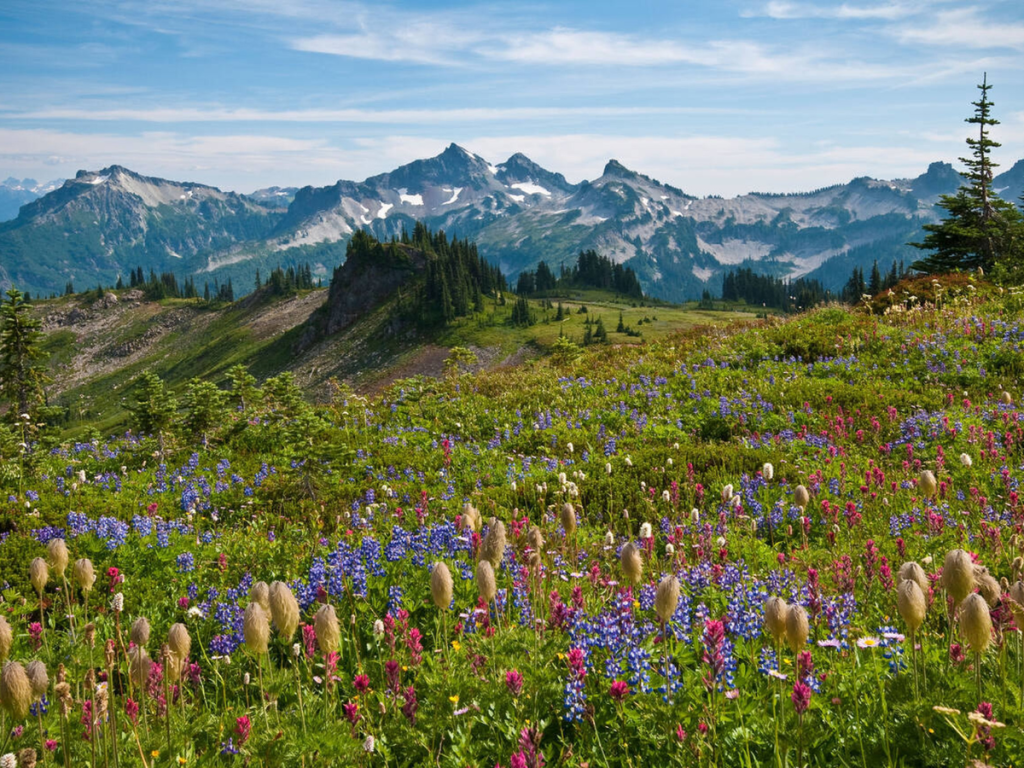
Planning Your Paradise Visit
Reservations and Entry Requirements
Good news for spontaneous adventurers – Mount Rainier National Park doesn’t currently require timed entry reservations for Paradise. However, you’ll still need to pay the standard park entrance fee ($30 per vehicle for seven days, or $55 for an annual Mount Rainier pass).
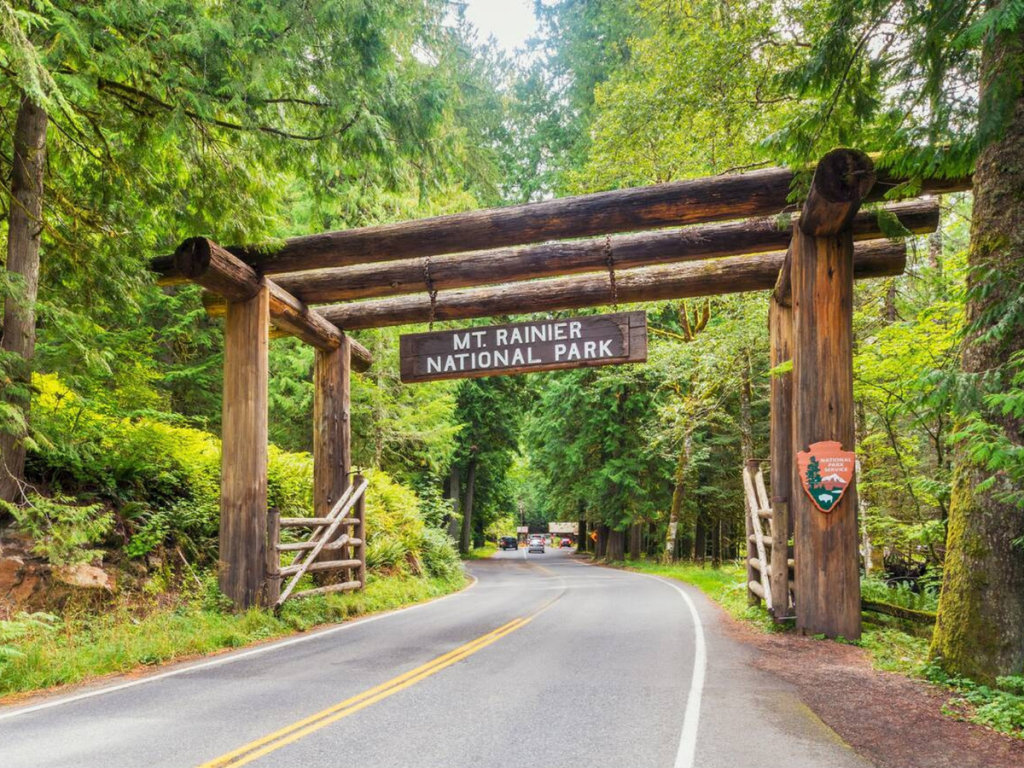
Pro tip: If you’re planning to visit multiple national parks this year, grab the America the Beautiful Annual Pass for $80. It pays for itself after just three park visits.
Parking Tips and Strategies
Oh boy, let’s talk about the elephant in the room. Paradise parking can be absolutely BRUTAL during peak summer weekends! I’m talking completely full by 10 AM on sunny July and August days. Cars circle like vultures waiting for spots, and the backup can extend for literal miles down the mountain road. It’s kind of insane, but thankfully we learned some strategies after multiple Mount Rainier National Park Paradise visits!
Here’s my battle-tested parking strategy that actually works:
- Get there super early: I’m talking 7-8 AM during peak season (yes, I know it’s early, but trust me!)
- Weekdays are absolutely golden: If you can possibly swing it, visit Monday through Thursday
- Always have a backup plan: Consider starting from other trailheads like Box Canyon or Stevens Canyon
- Be patient: Parking turnover happens throughout the day as day hikers return
The main Paradise parking area has about 200 spaces spread across several lots, with additional overflow parking available when needed.
What to Pack for Paradise
Mountain weather changes quickly, and what starts as a sunny morning can turn into afternoon storms or unexpected cold spurts.
Essential items include:
- Layers, layers, layers: Temperature can vary 30+ degrees from morning to afternoon
- Rain protection: Pacific Northwest weather is notoriously unpredictable
- Sturdy hiking boots: Trails can be rocky, muddy, or snow-covered
- Plenty of water: At least 2-3 liters per person for longer hikes
- Snacks and lunch: Food options are limited in the park
- Sun protection: High elevation means stronger UV exposure
- Camera: You’ll regret not having one
- Trail map: Cell service is spotty to nonexistent
Best Paradise Hiking Trails
Mount Rainier National Park Paradise serves up hiking options like a well-designed buffet – something delicious for every appetite and fitness level!
Skyline Trail (Moderate)
Skyline Trail Paradise (5.5 miles loop, moderate) – THE Must-Do Trail
This is hands down the most beautiful trail on the Paradise side of Mount Rainier National Park! It’s literally what most people picture when they think of Mount Rainier. The Skyline Trail offers the most spectacular views of Mount Rainier, wildflower meadows that’ll make you question if you’re actually on planet Earth, and photo opportunities around literally every single bend.
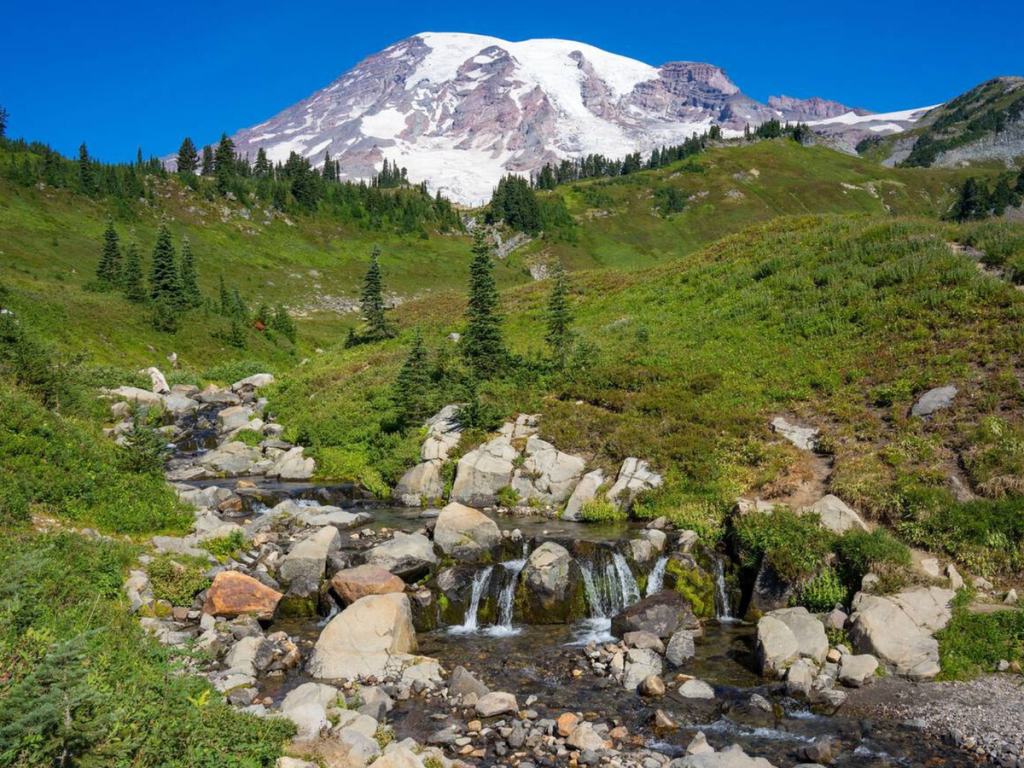
The trail takes you through classic subalpine terrain, past Panorama Point (which offers what I honestly believe are the best views of Mount Rainier you’ll find anywhere!), and through meadows that absolutely explode with color during wildflower season.
JT and I did this trail during our first visit in July, and I’m not kidding when I say we stopped every 50 feet to take photos. The wildflowers were so dense and colorful, it looked like someone had painted the mountainside! Plan on 3-4 hours for the full loop, and seriously — bring plenty of memory cards because you’re going to take SO many photos!
Myrtle Falls Trail (Easy)
Myrtle Falls Paradise (1.2 miles roundtrip, easy) – Perfect for Families
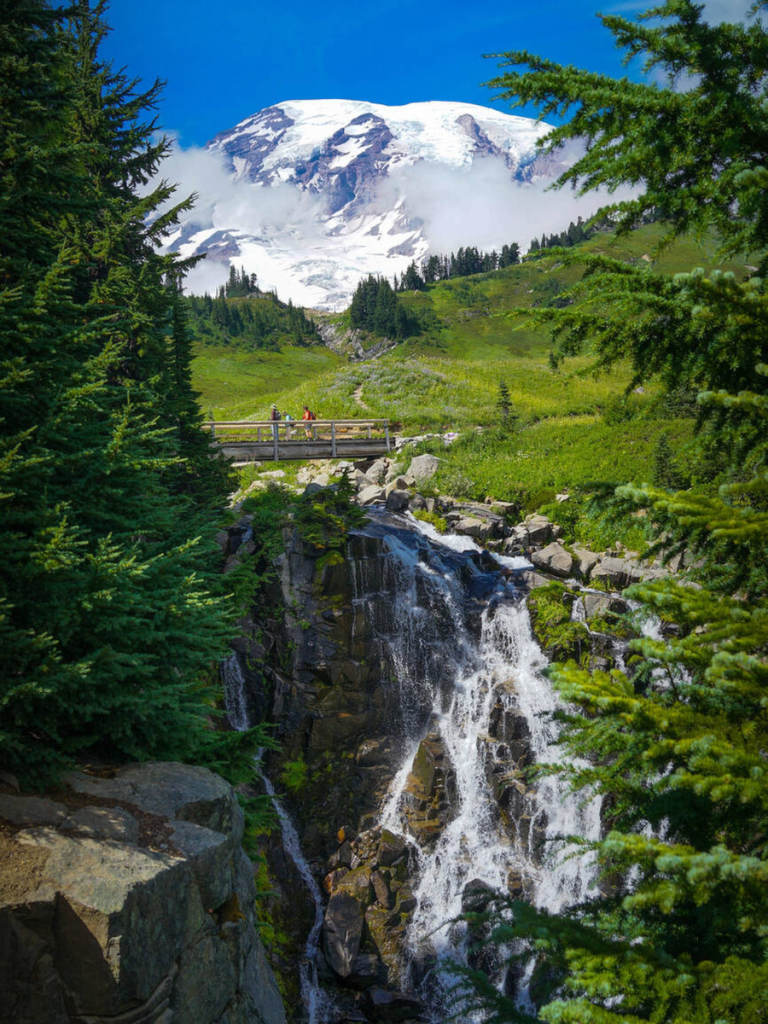
This is absolutely perfect for families with kids or anyone wanting a taste of Mount Rainier National Park Paradise without the major commitment! The Myrtle Falls trail is basically Paradise’s greatest hits reel compressed into an easy, manageable walk. You’ll pass through wildflower meadows, enjoy incredible views of Mount Rainier, and reach this beautiful waterfall that’s perfect for lunch and photos.
This trail is accessible for most fitness levels and offers maximum reward for minimal effort. It’s also a fantastic warm-up hike if you’re planning to tackle longer trails later in your visit!
Tolmie Peak & Panorama Point (Moderate to Difficult)
Tolmie Peak (6.5 miles roundtrip, moderate) – A Hidden Gem
While technically starting from a different trailhead, Tolmie Peak deserves mention as one of the best day hikes in the Paradise area. The trail offers incredible views of Mount Rainier, alpine lakes, and wildflower meadows, with a stunning payoff at the historic fire lookout tower.
Panorama Point (5.5 miles roundtrip, moderate) – Views That’ll Blow Your Mind
You can reach Panorama Point as part of the Skyline Trail loop, but it’s worth calling out specifically because the views are absolutely phenomenal! On clear days, you’ll see Mount Rainier, Mount Adams, Mount Hood, and Mount St. Helens all from the same vantage point.
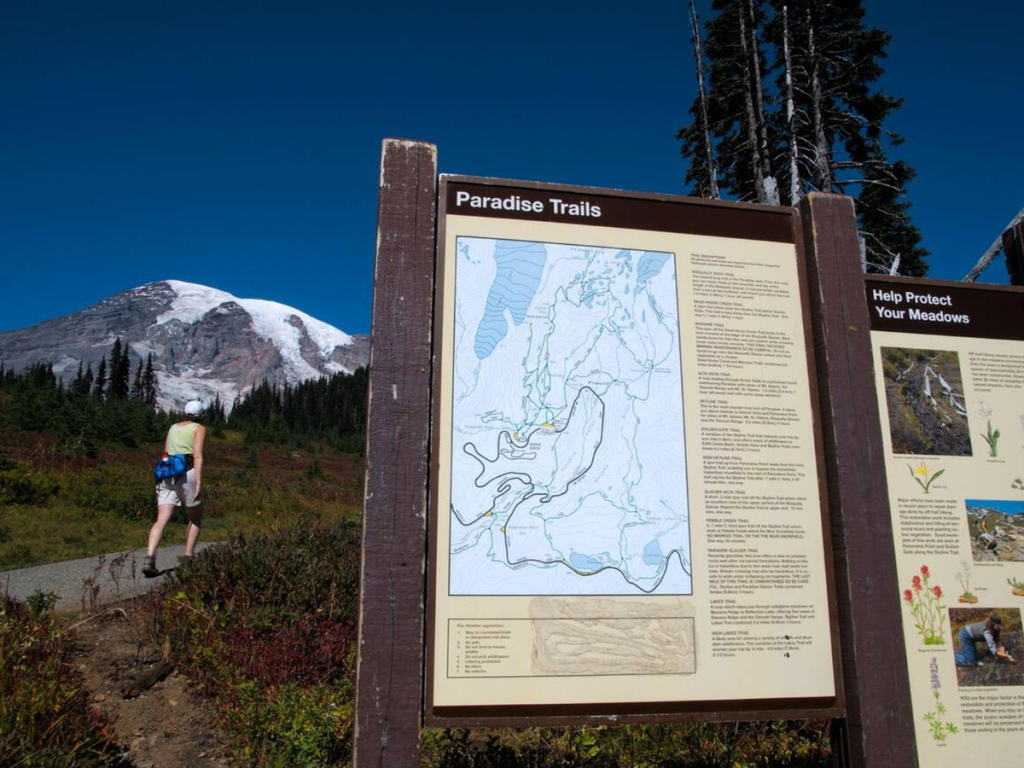
Paradise Facilities and Services
Paradise Visitor Center
The Paradise Visitor Center serves as your gateway to understanding this incredible ecosystem. Open year-round (though hours vary by season), the center offers interactive exhibits about Mount Rainier’s geology, wildlife, and climbing history. The staff here are incredibly knowledgeable and can provide real-time trail conditions and weather updates too!
Facilities include:
- Clean restrooms (always appreciated after a long hike)
- Gift shop with maps, books, and souvenirs
- Information desk staffed by knowledgeable rangers
- Educational exhibits about the park’s natural and cultural history
- Starting point for many guided programs
The building itself is also worth admiring — it’s designed to blend seamlessly with the natural environment while providing all the modern amenities visitors need.
Food and Dining Options
Food options at Paradise are limited, so planning ahead is essential. The historic Paradise Inn (when open, typically May through September) offers a dining room with hearty mountain fare, but it’s the only full restaurant option in the immediate area.
My best advice? Pack a lunch and plenty of snacks! There’s seriously something magical about eating a sandwich while sitting in an alpine meadow with Mount Rainier towering above you. JT and I have done this multiple times during our Mount Rainier National Park Paradise visits, and it honestly always becomes one of our favorite memories! Trust me on this one! it’s one of those simple moments that become incredible memories!
Activities Beyond Hiking
Winter Activities and Snowshoeing
Don’t let winter fool you into thinking Paradise shuts down. The area transforms into a completely different but equally magical destination. Snowshoeing becomes the primary way to explore, with several marked routes ranging from easy family-friendly options to more challenging backcountry adventures.
Popular winter activities include:
- Snowshoeing: Marked trails of varying difficulty
- Cross-country skiing: Several groomed and ungroomed routes
- Sledding: Designated areas near the visitor center
- Photography: Snow-covered landscapes offer incredible photo opportunities
- Ranger programs: Winter-specific educational programs
Wildlife Viewing and Photography
Mount Rainier National Park Paradise offers some of the most photogenic landscapes in the Pacific Northwest, but capturing them well requires some planning:
Golden hour magic: Early morning and late afternoon light transforms the meadows and mountain views into pure magic.
Wildflower photography: Get low and close for intimate flower portraits, but also step back for grand landscape shots showing the scale of the meadows.
Weather drama: Don’t pack up when clouds roll in – some of the most dramatic photos happen when weather creates mood and atmosphere.
Multiple perspectives: The same meadow can look completely different from various vantage points along the trails.
Ranger Programs
Paradise offers various ranger-led programs throughout the year, from guided wildflower walks during peak season to snowshoe programs in winter. These programs provide incredible insights into the area’s ecology, geology, and history that you simply can’t get from hiking alone.
Popular programs include:
- Wildflower walks: Peak season guided tours of the meadows
- Evening programs: Educational presentations at the visitor center
- Junior Ranger programs: Kid-focused activities and learning opportunities
- Winter snowshoe programs: Guided winter exploration
Check the park’s current program schedule, as offerings vary by season and ranger availability.
Where to Stay Near Paradise
Accommodation options near Paradise range from rustic to comfortable:
Paradise Inn: As the ultimate park lodging, this historic inn offers the ultimate convenience of staying right in Paradise. If you want to stay here — book early! We’re talking months in advance for summer dates.
Camping: The nearest campground is Cougar Rock, about 10 miles from Paradise. Camping offers a more budget-friendly option with easy access to Paradise and other park areas!
Outside the park: Ashford, Packwood, and Longmire offer various lodging options from budget motels to vacation rentals.
Most visitors fly into Seattle-Tacoma International Airport, making it about a 2.5-hour drive to Paradise. If you’re planning to explore Seattle before or after your mountain adventure, consider spending a few days in the Emerald City! Our 3-day Seattle travel guide covers all the must-see attractions and hidden gems perfect for first-time visitors.
Essential Tips for Your Visit
Check Current Conditions: Before heading to Mount Rainier National Park Paradise, always check current conditions through official park channels:
- National Park Service website: Real-time road and trail conditions
- Paradise webcam: Live views of current weather conditions
- Visitor center: Call for the most up-to-date information
- Social media: Recent visitor photos and reports (take with a grain of salt)
Trail conditions can change rapidly, especially during shoulder seasons when snow is melting or weather is transitional.
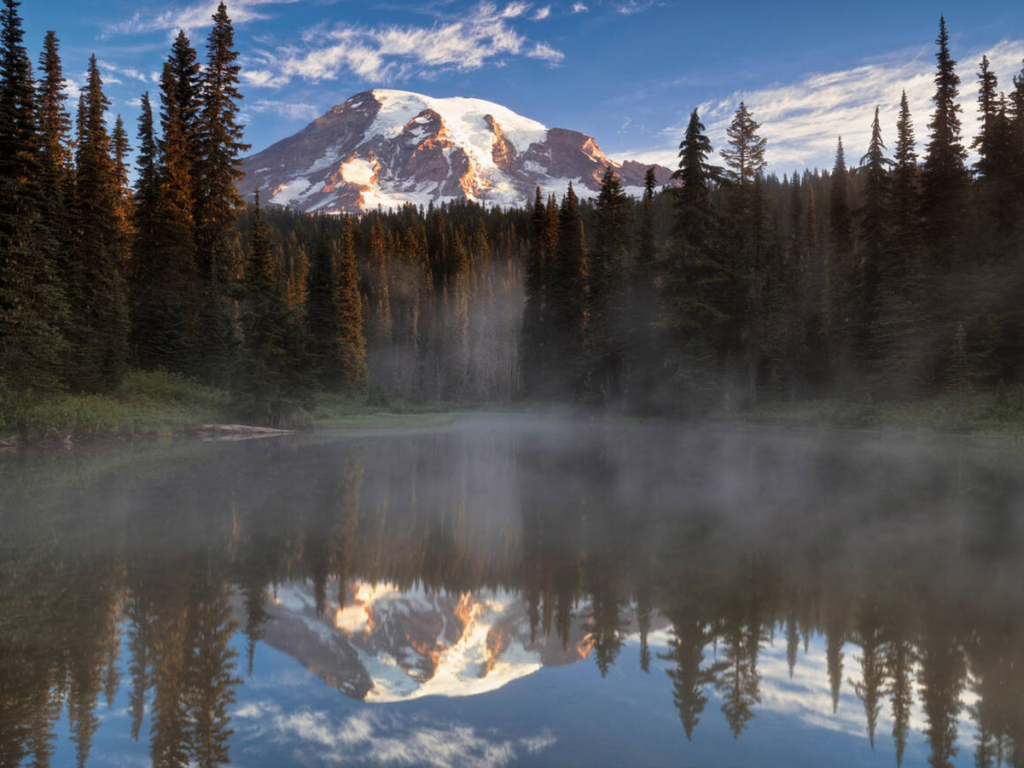
Seasonal Considerations: Paradise operates year-round, but “open” means different things depending on the season. The Paradise Visitor Center stays open throughout the year, though hours reduce significantly during winter months. The road to Paradise typically remains plowed and accessible, making it one of the few high-elevation areas in the park you can reach by car in winter.
However, many hiking trails become inaccessible due to snow from October through June. The Skyline Trail, for example, might not be fully accessible until July, depending on snow conditions.
Wildflower Season: The Mount Rainier National Park Paradise wildflower season is legendary among Pacific Northwest nature lovers. Peak bloom typically occurs from mid-July through early August, though this can vary significantly based on snowpack and weather patterns.
Different elevations bloom at different times, creating a moving wave of color that starts in lower meadows and gradually climbs higher as snow melts. Early season (late June/early July) brings lupines and beargrass, while peak season (mid to late July) explodes with Indian paintbrush, mountain aster, and dozens of other species.
Final Thoughts
Mount Rainier National Park Paradise absolutely delivers on its heavenly promise in ways that photos and descriptions honestly can’t fully capture! Whether you’re chasing wildflowers in July, enjoying winter snowshoeing, or simply soaking in those incredible mountain views, Mount Rainier National Park Paradise offers experiences that stick with you long after you’ve returned home.
The key to a successful Paradise visit lies in preparation, flexibility, and realistic expectations. Arrive super early during peak season, pack for changing conditions, and remember that sometimes the best moments happen when plans go sideways and you discover something totally unexpected!
After visiting all 50 states in the US, JT and I can honestly say that Paradise ranks as one of our absolute favorite destinations in the entire country.
So grab your hiking boots, pack that camera, and prepare for one of Washington’s most incredible natural experiences. Mount Rainier National Park Paradise is waiting, and trust us — it’s every bit as amazing as its name suggests! we can’t wait for you to experience the magic for yourself!
Ready to plan your Paradise adventure? Check current trail conditions, book your accommodations early (seriously, like really early!), and prepare for an alpine experience that’ll have you planning your return visit before you’ve even left the parking lot!
Paradise is just one incredible stop on what could be an amazing Pacific Northwest adventure. If you’re looking to explore more of this stunning region, don’t miss our 7-day Pacific Northwest road trip itinerary that includes Mount Rainier along with Olympic National Park, the Oregon Coast, and other epic destinations that’ll make your trip unforgettable!
